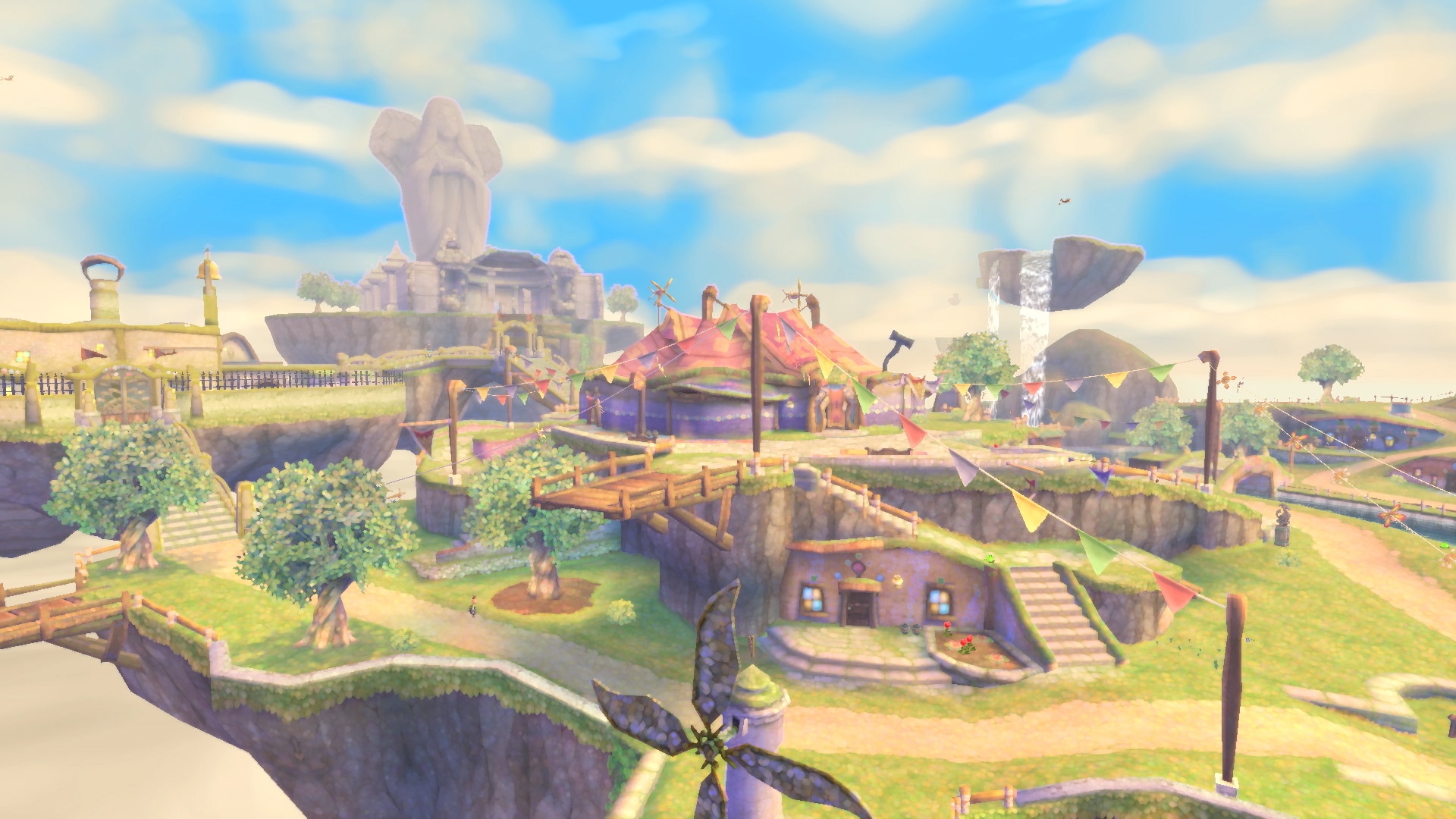The Legend of Zelda: Skyward Sword HD Review – Better or Worse Than the Original?
-
Option between Handheld and TV mode
-
Classic, vibrant visuals and music
-
Quality of life updates make the world of difference
-
Frustrating motion controls
-
'HD' may be misleading
The Legend of Zelda: Skyward Sword HD received backlash and disappointment at its announcement. Fans of the series were disappointed that Nintendo was re-releasing an updated old game rather than releasing the highly anticipated Breath of The Wild 2. By returning with a multitude of quality-of-life updates and fan-driven fixes, The Legend of Zelda: Skyward Sword HD has instantly superseded the original and, to a large extent, answered the doubters.
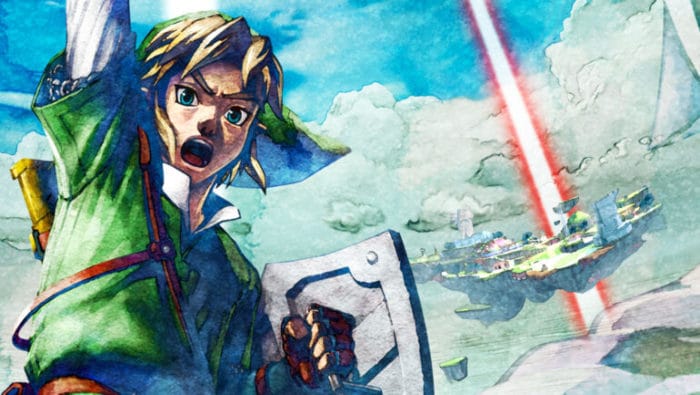
This is now a game that has truly earned its place on the Nintendo Switch console. For anyone that didn’t get the chance to play the old version when it was released on the Wii in 2011, Skyward Sword HD is a story-centred, puzzle-oriented experience. However, even in its newly invigorated format it still has its… technical foibles.
Still, the feeling of hitting that first timeshift stone brought all of that Zelda magic crashing back to me with full nostalgic force. Striking the timeshift stone brings the dingy brown stones to life. Within the stone’s bubble, vitality returns to the decaying remains around me. That sentimental, childish joy and wonder found throughout is the reason, I believe, The Legend of Zelda: Skyward Sword HD deserves to be viewed as its own game and not just a remaster.
Quality of Life Updates that Deliver – Controls not So Much
Normally I’d start by addressing the storyline since it’s the backbone of titles like this. But Skyward Sword HD has promised its biggest impact will be through technical updates. These updates primarily focus on improving quality of life and bringing the game up to modern-day standards, but I need to focus first on the update… that did not work.
Anyone who played the Wii original Skyward Sword likely played it in front of their living room TV, and Nintendo has honoured that by bringing the motion controls into the modern age and adapting it fully to the Nintendo Switch system.
In my opinion, the ability to choose between handheld or docked TV mode is the biggest update made to the game–and the best one at that. This is because, unfortunately, the motion controls are still iffy at times. I played in handheld mode for the majority of my time simply out of frustration at the inaccuracy of the motion controls. Especially when it came to flying with my Crimson Loftwing, or trying to aim with any precision at all.
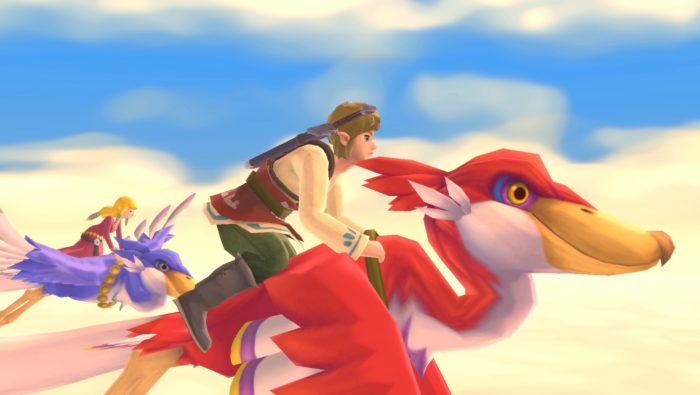
The issue was so bad it left me thinking–was it a fault with my Switch? Well, I thought so too. I used the in-menu feature to reset the gyro control and did it according to official and unofficial guidance, and checked every tech spec on my Switch that could have been causing the problem. This is how bad the motion controls are. I started to think a new Switch was needed! I did get the chance to test the game out on another Switch briefly, though, and had the same issue. The motion controls simply are not at all accurate.
Being able to slash at enemies and fly my Loftwing in real-time was something I was excited about prior to playing. It turned out to be my least favourite aspect because of the controller issues, which was hugely disappointing. I still used the docked TV mode with motion controls on occasion to enjoy using the sword and bow, but I always ended up switching back to handheld.
The handheld button controls are interesting too, and not in a good way. Because the sword controls in particular are tracked via the thumbstick, I ended up randomly mashing the stick around during combat. Again, the accuracy just wasn’t there, but it was nice to have as a backup whenever I was driven to frustration by the motion controls.
It wasn’t a totally harrowing experience, though. The other quality of life updates really did add some surprisingly fun changes as well as necessary additions. The very first change I noticed was the camera. Players now have full control over a 360-degree camera angle and this is something that made the expansive environments feel all the more encompassing and immersive.
Moving through my quests started feeling more natural, and smoother too. The game now autosaves occasionally–along with manually saving at bird statues. It feels like this save flexibility hits the sweet spot of keeping the stakes high and making your life easy. At other points, the tutorials and Fi the trouble-shooter have been dialled back to give the experienced gamer some breathing room. Fi no longer pops up at every possible moment. Instead, you can call upon her whenever you want, but only if you want to. Fast-forwarding cutscenes and dialogue is another blessing from the developers. Anyone who struggled like I did to nail that Goddess Statue jump right at the start of the game feels my pain; repeated dialogue is hell.
From the Store
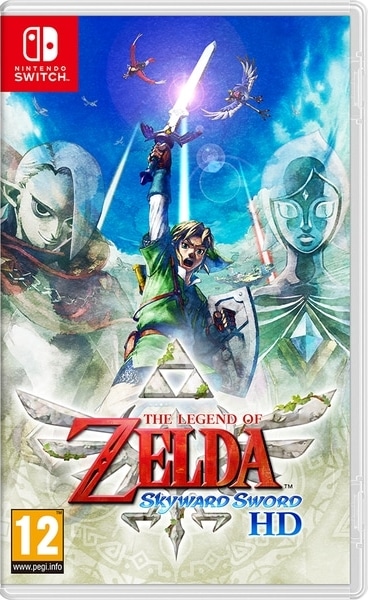
Witness the origins of the Master Sword in The Legend of Zelda: Skyward Sword HD for Nintendo Switch. Originally released on Wii in 2011, this classic quest has been optimised for Nintendo Switch with smoother motion controls and newly-added button controls.
The other update I have to mention, is right there in the game’s title. The Legend of Zelda: Skyward Sword HD is, well, in HD. At least it is to the extent that you can get blocky 3D character models from 2011 to appear in HD. The game looks great, and that is in part due to the phenomenal graphics and set design, partly also the higher definition. Sprinkle on top Skyward Sword HD now runs at a solid 60FPS (the old game ran at 30FPS, oof) and you have a tasty Zelda sundae.
Old-School Zelda Gameplay Preserved
It’s the dappled colour tones and deliciously saturated scenery that holds this game true to its recognisable roots and brings Skyward Sword HD into my top 3 favourite Zelda games, Phantom Hourglass being number one–although some consider that the worst of the franchise. Read into that what you will about this review!
As I played deeper and deeper into the world of Skyloft and the evil Demise below, I realised how hard Nintendo must have worked NOT to change everything. For the most part, I still felt like I was playing an older Zelda. I was simultaneously playing through Breath of the Wild while preparing for this review so I had a good chance to compare the old with the new.
The puzzles in The Legend of Zelda: Skyward Sword HD were one of those things that screamed out classic Zelda vibes. Frankly, these puzzles were underrated in the original release–they’re some of the smartest in the whole series. From the cobweb-filled, eerie Skyview Temple to opening the bridge on the Isle of Songs, the whole of Skyward Sword HD is filled with neatly planned out events, puzzles, and dramatic cutscenes that build on the tightly structured layout of the game. There are no wide, expansive areas for Breath of the Wild-style exploration here.
A Narrative Worth Following
The Legend of Zelda: Skyward Sword HD offers an indulgent insight into Link and Zelda’s relationship, and Zelda’s connection to the Goddess. The story you’re introduced to is that the Goddess, protecting the Ultimate Power, took the last surviving humans away from an evil-infested land. She set them safely in a floating cityscape called Skyloft, where every human has a bonded Loftwing to soar through the skies with.
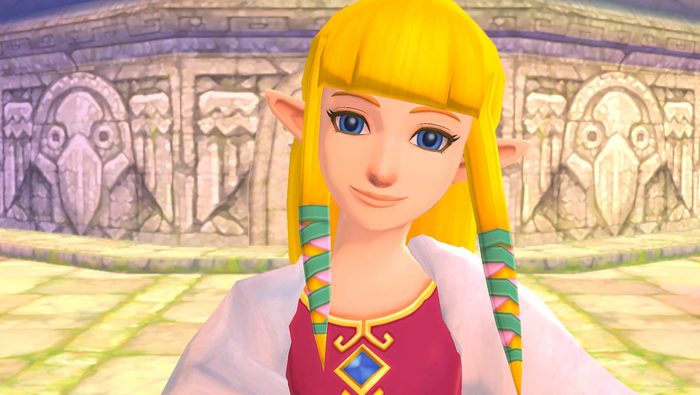
The story I ended up being most interested in was actually the awkward romance between Link and Zelda, and then Zelda’s journey to discovering the truth of her past and how Link must kill Demise. Both narrative lines–the relationship between our hero and heroine, and the fate of the Ultimate Power–are heartfelt in their telling. I felt every ounce of Zelda’s desperation to protect her people.
By 2021, we’ve seen many iterations of Zelda’s character–even as a pirate princess, Tetra, in Wind Waker and Phantom Hourglass. Skyward Sword HD sees Zelda as the mortal incarnation of Hylia, who had previously tried and failed to defeat the evil Demise that now haunts the land below.
Is this the most ground-breaking piece of Zelda narrative? Well, no. But it does demonstrate how well an older storyline can translate into the modern format. The story of Skyward Sword holds its own alongside the technical performance improvements that have otherwise taken the limelight in the marketing for this game, and for that reason The Legend of Zelda: Skyward Sword HD is a game I’ve already been recommending to my Zelda-loving friends. With the narrative keeping true to the old and the quality of life updates bringing the new, this is an overall well-balanced game, even with its hiccups.
Is it Worth Buying if you Played the Original?
If you played the old version of Skyward Sword, you should definitely play The Legend of Zelda: Skyward Sword HD. No doubt. Why? Because it’s given a deeply flawed and criticised episode in the Zelda saga another chance. Yes, the motion controls still aren’t bullseye accurate, but they’re certainly better than the original Wii game. For a revived experience of Link and Zelda’s most lofty and puzzle-driven adventure, The Legend of Zelda: Skyward Sword HD does what it was intended to. It has brought a largely unloved game to the attention of not only new audiences but those who played the original and hated it for the wrong reasons.
From the Store

Witness the origins of the Master Sword in The Legend of Zelda: Skyward Sword HD for Nintendo Switch. Originally released on Wii in 2011, this classic quest has been optimised for Nintendo Switch with smoother motion controls and newly-added button controls.

